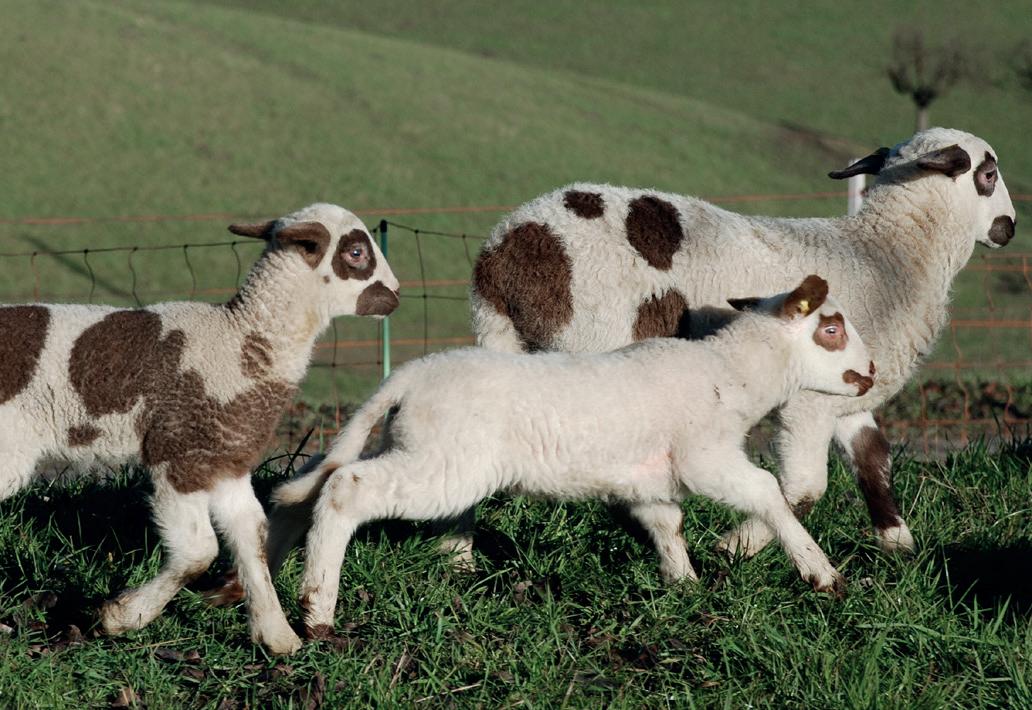
1 minute read
Mirror sheep
Freshly shorn ewe of the Mirror sheep breed at pasture in the mountains; note the characteristic wool-free belly (Mariann Nauer / Spiegelschaf-Zuchtverein)
Origin and development
The Mirror sheep derives from old Graubünden breeds such as the Prättigau, and its development was probably influenced by the Seiden and the Luzein sheep. As the borders were still open for seasonal movements of sheep in the 17th and 18th century, Austrian breeds such as the Montafon and the Spectacle sheep probably also contributed to the development of the Mirror sheep. From 1985 onwards, thanks to the efforts of dedicated breeders, a respectable population of Mirror sheep was built up from the last surviving stocks. This breed is now kept throughout Switzerland.
Description
The Mirror sheep takes its name from its smooth, bright forehead. Its belly and legs are also wool-free. Both the males and females are hornless. The lambs have striking, attractive dark patches all over their body and head. Another characteristic feature of the Mirror sheep are the dark markings around its mouth and eyes, resembling spectacles. The tips of its ears are also of a dark colour, which fades with age. Ewes lamb once or twice a year, often bearing twins.

Lambs of the Mirror sheep breed, with the characteristic striking dark patches all over their body which they lose as adults (Heinz Feldmann / Spiegelschaf-Zuchtverein)
Breeding objectives
h Hardiness, adaptability, health, no genetic defects h Good rearing traits and milk production h Good roughage-based fattening capacity h Longevity h Medium wool quality
References
Spiegelschaf-Zuchtverein (www.spiegelschaf.ch) Züchterverband für seltene Nutztierrassen (www.zvsnr.ch) ProSpecieRara (www.prospecierara.ch)

